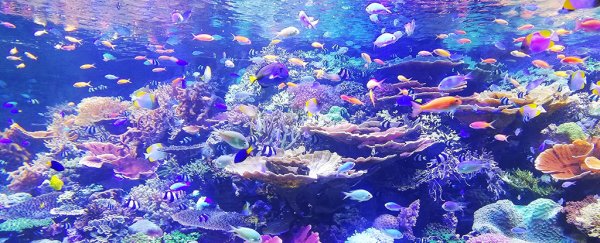If you're not familiar with UN Sustainable Development Goal number 14, its aim is to "conserve and sustainably use the oceans, seas and marine resources for sustainable development" – and scientists just put together a 30-year plan to achieve that.
Despite rapid warming, increasing acidification, plastic pollution, growing dead zones and other environmental concerns that humankind is responsible for, these scientists think that our underwater ecosystems can be restored and become thriving again.
There's a lot of work ahead of us, but the new plan points to the resilience of many marine species as a glimmer of hope for the future. If we can give these species a chance to recover, marine life can be replenished within a generation, the team suggests.
"We are at a point where we can choose between a legacy of a resilient and vibrant ocean or an irreversibly disrupted ocean," says marine scientist Carlos Duarte, from the King Abdullah University of Science and Technology (KAUST) in Saudi Arabia.
"Our study documents recovery of marine populations, habitats and ecosystems following past conservation interventions. It provides specific, evidence-based recommendations to scale proven solutions globally."
Durate and his colleagues looked at a wide variety of studies, reports and statistics to gauge the health of the oceans, finding that half of marine life populations have suffered a decline over the last four decades.
They mention nine key components to form the basis of a recovery plan: salt marshes, mangroves, seagrasses, coral reefs, kelp, oyster reefs, fisheries, megafauna, and the deep sea. Focus on these, the researchers say, and marine life should follow.
If we get this right, everyone benefits – salt marshes and sea grasses can lock away carbon in the atmosphere, for example, while mangroves have proven to be effective barriers against floods and waves.
The team pointed to previously successful conservation efforts to rescue species, from elephant seals to green turtles, as evidence that all is not lost when it comes to keeping underwater ecosystems going.
"Despite humanity having greatly distorted our oceans, recent interventions have led to a number of remarkable success stories," says biological scientist Catherine Lovelock, from the University of Queensland in Australia.
"The world has come together before to implement moratoriums on whaling, create a Law of the Sea, prevent pollution from ships, and limit industrialised fishing – all with positive outcomes. For the sake of our oceans, let's go further."
The team also identified six "recovery wedges" to focus on, namely protecting species, protecting spaces, harvesting wisely, restoring habitats, reducing pollution and – crucially – mitigating climate change.
Get all of these wedges working together at scale, according to the new study, and we should see an abundance of marine life recovery by 2050. The team stresses it will need a massive effort in terms of finances and international cooperation – but it is possible.
There's no particular past reference point in the history of our oceans that the researchers are aiming for, but they say that marine wildlife can flourish again – and expand to support a growing human population on land.
These ecosystems feed us, support us, and even keep us protected from unknown viruses. If we don't act to guarantee the future of the world under the seas, then we don't have much of a future ourselves.
"Rebuilding marine life represents a doable grand challenge for humanity, an ethical obligation and a smart economic objective to achieve a sustainable future," says marine scientist Susana Agustí, from KAUST.
The research has been published in Nature.
